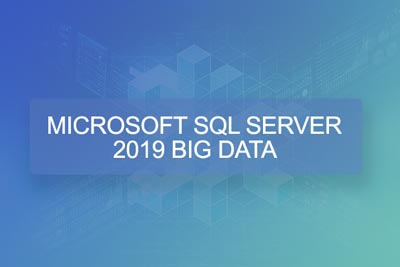Course Overview

Course objectives
For instance, you can stream large volumes of data from Apache Spark in real-time while executing Transact-SQL queries to bring in relevant additional data from your corporate, SQL Server database. This course provides everything necessary to get started working with Big Data Clusters in SQL Server 2019. You will learn about the architectural foundations that are made up from Kubernetes, Spark, HDFS, and SQL Server on Linux.
Modules
Module 1: What are Big Data Clusters?
- 1.1 Introduction
- 1.2 Linux, PolyBase, and Active Directory
- 1.3 Scenarios
Module 2: Big Data Cluster Architecture
- 2.1 Introduction
- 2.2 Docker
- 2.3 Kubernetes
- 2.4 Hadoop and Spark
- 2.5 Components
- 2.6 Endpoints
Module 3: Deployment of Big Data Clusters
- 3.1 Introduction
- 3.2 Install Prerequisites
- 3.3 Deploy Kubernetes
- 3.4 Deploy BDC
- 3.5 Monitor and Verify Deployment
Module 4: Loading and Querying Data in Big Data Clusters
- 4.1 Introduction
- 4.2 HDFS with Curl
- 4.3 Loading Data with T-SQL
- 4.4 Virtualizing Data
- 4.5 Restoring a Database
Module 5: Working with Spark in Big Data Clusters
- 5.1 Introduction
- 5.2 What is Spark
- 5.3 Submitting Spark Jobs
- 5.4 Running Spark Jobs via Notebooks
- 5.5 Transforming CSV
- 5.6 Spark-SQL
- 5.7 Spark to SQL ETL
Module 6: Machine Learning on Big Data Clusters
- 6.1 Introduction
- 6.2 Machine Learning Services
- 6.3 Using MLeap
- 6.4 Using Python
- 6.5 Using R
Module 7: Create and Consume Big Data Cluster Apps
- 7.1 Introduction
- 7.2 Deploying, Running, Consuming, and Monitoring an App
- 7.3 Python Example – Deploy with azdata and Monitoring
- 7.4 R Example – Deploy with VS Code and Consume with Postman
- 7.5 MLeap Example – Create a yaml file
- 7.6 SSIS Example – Implement scheduled execution of a DB backup
Module 8: Maintenance of Big Data Clusters
- 8.1 Introduction
- 8.2 Monitoring
- 8.3 Managing and Automation
- 8.4 Course Wrap Up
Modes of Learning
- Flashcards: Remember the “read and guess” games we used to play back then? Here’s to enhance what you learned. How does it work? A statement will be written on a flashcard, and you’ll need to guess the answer. Then flip it over to see if you answered it correctly. The cards continue, each with a random statement from the course that you took previously.
- Scatter: “Make Everything Disappear.” Turn the screen white and vanish it all but this time testing your knowledge and your time being monitored. Find the best match and click your way toward success. This brain teaser might give you a hard time! But education combined with games adds an element of fun to it.
- Learn: Here’s another. Read and choose the right answer. A game designed on a Multiple-Choice pattern. This kind of exercise boosts your confidence. When one option seems to be correct, you choose the other only for it to be the right option. The right option will welcome another statement, but don’t sweat! You are still learning.
- Speller: This fun-packed game is unique in its own way. Hear the term carefully and type it out on your screen. You think you are a pro at learning spellings of tricky terms. Test yourself out with this game. Could you hear it properly? If you could, were you able to write it?
We have found our students doing absolutely great by showcasing their certificates. Grab that certificate of yours before someone else does and get that recognition you deserve.
You best learn when you see it. Our easy-to-understand video content is in place for you. Watch the studying content and grasp all the concepts easily. With so many lectures and 3000+ hours of video content, find what suits your needs. These educational videos are designed to sharpen your experience with your training content. Our easy-to-understand video content is in place for you. Watch the studying content and grasp all the concepts easily.
In contrast to other e-learning services, our labs will let you exercise what you analyze in a real environment with a lot to choose from. This layout mirrors the traditional study room format which ensures you will recognize exactly the way to set up, manage and troubleshoot any environment.
Being a successful IT professional involves more than knowing key terms and concepts. You need to be able to “apply” your knowledge to real-world situations. At EZDA we quote, “Learn it to pertain to it.” So, why spend money buying the equipment when we got you all covered?

